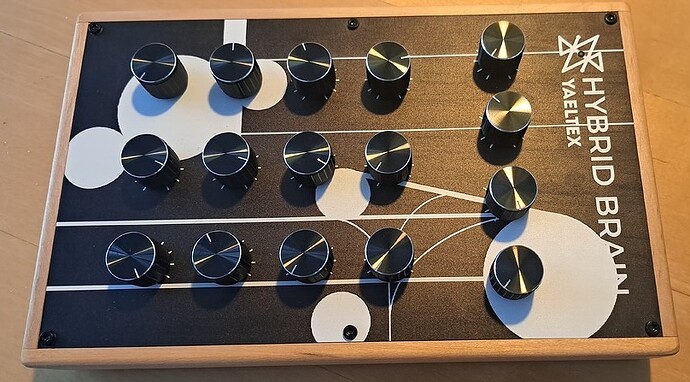
What do you mean by overall tempo? You mean the tempo of the automatic randomizer or the actual sounds?
You do not have to change anything in the mix modules or the whole “engine” part: it is like some use to call it a “patch in a box and bent by design”. With the controller section you can change everything, without breaking the patch.
If you have the automatic randomize button on, you can change the speed of change by adjusting the rate and/or lowering the change amount (which is the probability it will fire a change)
If it are the actual sounds you are meaning:
What you hear is a comparator signal (PWM) pinging/exciting the filter.
The comparator fires a gate every time the two oscillators have the same voltage. So the ratio between the two oscillators are key to understand how the Blippoo Box behaves. When you set the oscillators (and the filters) to no modulation at all, you will hear how it works. So, when both oscillators are set to a slow rate, the times they are the same voltage are slow. When you change one of the oscillator to a higher rate, there will be pulse trains. When in audio rate, you will hear a pitch. If you then move the other oscillator also upwards it will change from a pulsating pitch, to subharmonic relationships up to complex waveforms. The two oscillators are in essence one complex oscillator, where there is no difference between which oscillator is the modulator and which is the carrier; they are equal and interchangeable.
The modulation parameters (runglers and sample&hold) are also derived from the oscillators and fed back into the fm input of the oscillators. This creates a very chaotic behaviour which is full of sonic surprises. But still you could kind of control it if you keep the ratio’s between the oscillators in mind.
Lots of modulation means this ratio is shifting more and more, less is only slightly moving. When you have no modulation, the ratio will stay the same.
It is the kind of the same with the two peaks: they follow/change pitch with the modulation being applied (slight mod = slight pitch variation and so on)
The sample&hold parameter is sampling a cv signal from the oscillator core. it is clocked by the same comparator (PWM) signal, which is pinging the filter. With the mode knob you can decide which signal is being sampled: the triangle waveform of oscillator 2 or the averaged mix of the two rungler signals. When it samples the triangle wave it generates sweeps, when it samples the rungler mix, it creates a more steppy signal. In the hardware versions you can flip a switch, but in this patch you can morph into the two, creating all kinds of slewed steps -or steppy sweeps, depending on where you have the parameter set.
The cross fm creates an even more chaotic behaviour on top of the rungler signals and it will blur the oscillators even more upto noise.
Then there is the ext input. Which is an aux input into the filters (not the oscillators). So you can use the Blippoo Box as an effect. The cut off frequency of the two peaks still follow the two oscillators though which create the cv signals.
In this file Rob Hordijk explains it in detail:
Hordijk Rob (2009) The Blippoo Box - A Chaotic Electronic Music Instrument, Bent by Design.pdf (2.5 MB)
This is the only known “official” documented info on the Blippoo Box. Very informative read.
But in the end, you just have to learn it like a real instrument! Start slow and build a muscle memory for the controls. And have an external midi controller for all the knobs!! This greatly improves the performative aspect of it and transforms it into a true instrument. With the randomizer you could scroll through different settings manually as well. This helped me a lot in hearing something I like and learning the settings and ratios inbetween the knob positions.
Have fun  it is a very chaotic little beast.
I am for sure already two years having a blast with it!
it is a very chaotic little beast.
I am for sure already two years having a blast with it!
![]()
